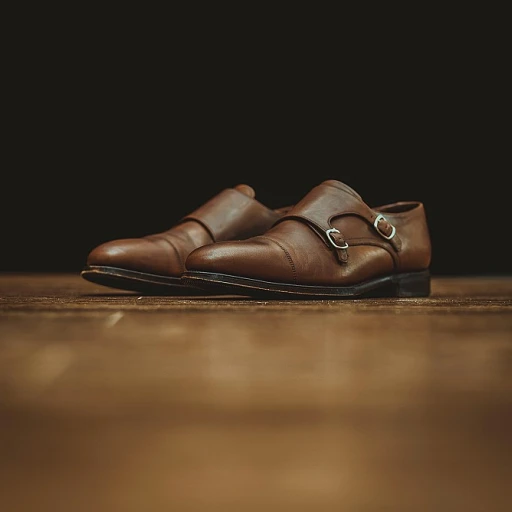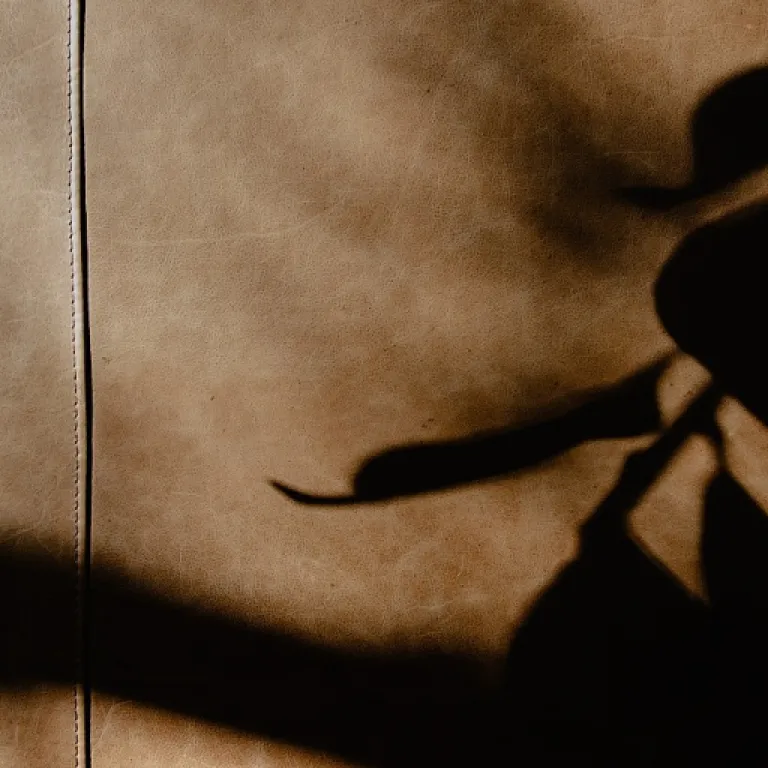Understanding Elephant Hide Leather
The Unique Allure of Elephant Leather
The fascination with elephant leather lies in its distinct texture and appearance, which sets it apart from other luxury materials. The grain of elephant hide is unique, offering a pattern and color variation you won't find in cow or buffalo leather. From the deep, warm tones of brown leather to the classic color black, these natural shades are celebrated for their elegance and timeless appeal.
Elephants' skins, marked by deep grooves and wrinkles, provide a richness and depth that can't be replicated by faux leather or vinyl fabrics. The thick, durable material ensures longevity, making it a favorite among luxury leather enthusiasts who appreciate both style and substance. The rarity of genuine elephant hides also adds an element of exclusivity to products crafted from this material, further enhancing their allure.
However, elephant leather products are not just about aesthetics. The inherent quality of the hides means that each piece is crafted with precision and attention to detail. For those who value craftsmanship, elephant leather offers a tangible connection to a time-honored tradition of artisanal leatherworking.
If you're interested in expanding your collection of unique leather pieces, consider exploring these
unique leather gift ideas for your anniversary to elevate your understanding and appreciation of luxury leather goods.
The Ethical Debate Surrounding Elephant Hide
The Ethical Landscape of Elephant Hide Usage
The world of elephant hide leather is as contentious as it is captivating. As fashion and luxury market demands burgeon, debates around the ethical implications of using elephant skin for genuine leather products heighten.
In many regions, elephants are regarded as endangered species. This status has prompted stringent regulations to conserve their populations. As such, the sourcing of elephant hides must comply with conservation principles, ensuring that leather production does not contribute to unlawful poaching or unsustainable practices.
When discussing the ethics surrounding the use of elephant leather, the dialogue often encompasses a slew of considerations:
- Conservation Efforts: Countries like the United States have regulatory frameworks that govern the import and export of elephant skins, only permitting materials that are ethically sourced or originate from legally approved conservation programs.
- Certification and Transparency: Genuine leather sourced from elephant hide requires certification to ensure it meets ethical standards. Transparency in the production and shipping of these products, including easy-to-access product details, helps consumers make informed choices.
- Faux Leather Alternatives: With increasing awareness of the ethical issues, the luxury market has seen a rise in alternatives such as faux leather, vinyl, and specially designed leather fabric and grain that imitate the texture and color of real elephant hide without animal exploitation.
It’s also essential to consider the role of ethical consumerism. Buyers are increasingly leaning towards products that boast sustainable practices or that use alternative materials like upholstery fabric that offer the allure of elephant leather without the ethical baggage.
These ongoing debates aren't only reshaping the market trends and consumer preferences but also driving innovations in leather production. To delve deeper into the ethical dialogues and alternatives, explore
here.
Craftsmanship and Quality
Mastering the Art and Quality of Elephant Hide Leather
The captivating nature of elephant hide leather lies heavily in its craftsmanship and unparalleled quality. When it comes to transforming this exotic material into a luxury leather good, artisans wield a blend of tradition and innovation.
The unique grain pattern and thickness of elephant leather demand skillful handling. This material is acclaimed for its robust, thick durable texture, which promises longevity and premium feel for various leather products. To craft it into a small-scale masterpiece, every piece of elephant skin undergoes meticulous processing to ensure it adheres to the high standards expected by discerning clientele.
In the realm of product details, elephant hide known for its natural grain provides a compelling visual and tactile experience, setting it apart from its counterparts like vinyl and faux leather. The aesthetics of elephant skins form distinct upholstery fabric panels that embellish any product with a statement of opulence.
The coloring of elephant hide also plays a pivotal role in its appeal. It is naturally found in shades that vary from a subtle, graceful grey to a bold color black or rich brown leather. This spectrum of hues offers consumers customizable options catering to personal preferences in luxury goods.
As one navigates the complexities of elephant leather, it is paramount to understand its status as an endangered species material. Conservation laws and ethical considerations heavily influence both the sourcing and crafting processes. Genuine elephant products are therefore crafted with precision, respecting safeguarding measures and legalities. They are exclusive, limited, and may include certifications to verify their authenticity and ethical sourcing.
For enthusiasts and collectors, owning an elephant leather item is more than just possessing a product; it embodies intricate craftsmanship, ethical awareness, and luxury. Embracing the care it requires also signifies the buyer’s commitment to preserving the allure and quality of this remarkable material over time.
For those seeking an alternative statement piece, exploring the elegance of brown leather backpacks is a sustainable nod to luxury without compromise on style.
Market Trends and Consumer Preferences
Current Trends in the Elephant Leather Market
The elephant leather market, while niche, reflects an interesting intersection of luxury, ethics, and craftsmanship. Elephant hide leather, distinguished by its thick, durable quality and unique grain structure, appeals to a small scale of luxury consumers seeking rare materials. Its inherent texture and natural patterning make it a highly sought-after upholstery fabric, particularly in shades ranging from brown leather to color black.
With increased awareness of the conservation challenges surrounding elephants as an endangered species, the demand dynamics for elephant skin products have shifted. Many brands within the United States and internationally are exploring alternative materials, such as high-quality faux leather and vinyl fabric, to cater to ethically conscious consumers while maintaining a luxurious aesthetic.
The market now also sees a growing emphasis on sample products for leather leather enthusiasts who wish to explore this material. The specifics of product details, like easy cut panels and free shipping offers, cater to the selective tastes of such consumers who value genuine craftsmanship but are conscious of the environmental and ethical considerations.
Leather experts are continuously innovating with treatments and finishes to enhance the appeal of both genuine and faux options, balancing tradition with modern conservation values. This evolution indicates a refined understanding and response to consumer preferences in a market that blends the luxurious allure of elephant leather with conscientious choices.
Caring for Elephant Hide Leather Products
Maintaining the Beauty of Elephant Hide Leather
Elephant hide leather is a unique and luxurious material, renowned for its distinct grain and durability. Caring for these products requires attention to detail and a commitment to preserving their natural beauty. Here’s how you can ensure your elephant leather items remain in pristine condition:
- Regular Cleaning: Use a soft, damp cloth to gently wipe away any dirt or dust. Avoid using harsh chemicals or abrasive materials that could damage the leather's surface.
- Conditioning: Apply a high-quality leather conditioner periodically to maintain the leather's suppleness and prevent it from drying out. This is particularly important for elephant leather, given its thick and durable nature.
- Storage: Store your leather products in a cool, dry place, away from direct sunlight, which can cause fading. Use dust bags or fabric covers to protect them from environmental elements.
- Avoid Excessive Moisture: While elephant hide is more resistant to water than other leathers, it’s still best to avoid excessive moisture. In case of accidental spills, blot the area immediately with a dry cloth.
- Professional Care: For deep cleaning or restoration, consider consulting a professional leather care service. They have the expertise to handle genuine leather products with the care they deserve.
By following these guidelines, you can enjoy the timeless elegance of your elephant hide leather products for years to come. Remember, the key to maintaining the allure of these items lies in regular care and mindful handling.
Alternatives and Innovations
Exploring Alternatives to Elephant Leather
As public awareness about the ethical concerns related to elephant hide continues to rise, the demand for alternatives has become more evident. Fortunately, there are several materials and innovations that cater to those seeking to enjoy the rich aesthetic of leather without contributing to the conservation issues surrounding elephants.
One popular alternative to genuine elephant leather is faux leather. This material mimics the texture and appearance of authentic leather without using animal hides. Faux leather, often crafted from vinyl, offers durability and a similar grain to genuine leather. Its availability in diverse colors, such as brown leather and color black, makes it a versatile choice for various products.
Another notable substitute is leather fabric made from other sustainable materials. These offer the classic appeal of leather items while adhering to ethical considerations. Upholstery fabric, for example, can replicate the luxurious feel of leather on larger panels, suitable for home décor or automotive interiors.
Additionally, advancements in technology have introduced innovative materials such as bio-fabricated leather. This type of leather is engineered from collagen grown in a lab, providing an option that neither requires animal hides nor heavily impacts the environment.
For those producing on a small scale or crafting personalized items, these alternatives present exciting opportunities. They offer thickness and durability comparable to genuine elephant leather, with the added advantage of easier customization and cutting.
Considering these substitutes can help alleviate demand on endangered species while satisfying the consumer’s desire for high-quality, luxury leather goods. It aligns well with the ongoing trend discussed earlier where consumers lean towards products that balance quality with ethical sourcing.
For those interested in exploring sustainable materials or seeking easy cut options without compromising on luxury, the market is ripe with options. Many of these alternatives also boast benefits such as reduced shipping costs due to lighter weights or availability of free shipping from vendors within the United States.
In a world more conscious of conservation efforts, embracing these innovative materials may not only cater to consumer preferences but also aid in promoting sustainable practices for the luxury leather industry.

